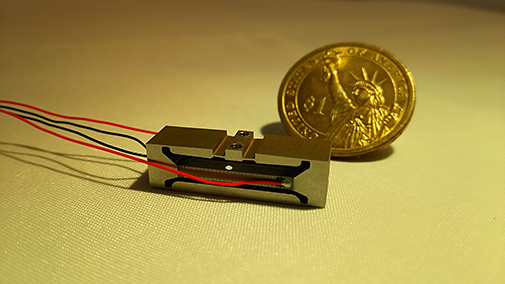

5Īnother difficulty arises from the co-localisation: the presence of near-field vibrations measured in the signal. To overcome this problem adaptive solutions have been suggested 4 and implemented successfully. 2, 3 However, the capacitor bridge may be slightly unbalanced leading to problems in the control. Electronic solutions taking advantage of the fact that the equivalent electronic impedance of the piezoelectric is capacitive like, have been developed, removing the electronic part of the signal by subtracting the signal from a second capacitance matched with the capacitance of the piezoelectric transducer. To do so, many strategies have been implemented. However, in SSPA configuration, the electrical component of the measured signal must be eliminated in order to retrieve the mechanical information. When used strictly as a sensor, the electrical component may be overlooked. Self-sensing piezoelectric actuators (SSPA) are an interesting avenue for structural active control by creating a virtual impedance for the supporting structure, since they are both dual and truly co-localised.Īs can be seen from the equations of a piezoelectric material, 1 the electric displacement, generated by a piezoelectric, depends both on the strain (mechanical component) and the electrical field (electrical component) applied to it. Numerical simulations show good agreement with experimental data. Strain-induced current has been successfully extracted from SSPA signal with this A shunt resistor is used to measure the current simultaneously with The numerical method of current separation has been programmed and validated with MATLAB/SimulinkR® and implemented on Speedgoat hardware. Plate is extracted without complicated electronics. Hence, information related to the global, vibrational flexural modes of the A similar processing can also be used to subtract from the sensor information, near-field vibrations Sufficient accuracy, adequate numerical processing can subtract the capacitive current from the total measuredĬurrent. Provided the measured current is digitized with The latter isĪn order of magnitude smaller than the total current measured.
#Piezo actuator and sensor plus
When a SSPA is submitted to a voltage, the measured current is the sum of the electric current due to theĬapacitive effect of the transducer plus the mechanical current induced by the strain of the structure. Piezoelectric device is used to simultaneously measure and actuate, it is called a self-sensing piezoelectric actuator Interesting avenue since they can lead to the implementation of distributed virtual impedances. Co-located piezoelectric sensors and actuators, spatially distributed on the structure, are an This requires to accurately measure the vibrations of the aircraft panels while injectingĪnti-vibrations. The book addresses students, academic as well as industrial reseachers and development engineers who are concerned with piezoelectric sensors and actuators.Significant reduction of airplane interior noise may be obtained by active structural acoustic control (ASAC) In particular, the studied application areas are The book also deals with various applications of piezoelectric sensors and actuators. An optical approach is presented that allows the quantitative determination of the resulting sound fields. One focus of the book lies on piezoelectric ultrasonic transducers. Furthermore, a simulation-based approach is detailed which enables the reliable characterization of sensor and actuator materials.

Different modeling approaches and methods to precisely predict the behavior of piezoelectric devices are described. It gives a comprehensive overview of piezoelectric materials such as quartz crystals and polycrystalline ceramic materials. This book introduces physical effects and fundamentals of piezoelectric sensors and actuators.


 0 kommentar(er)
0 kommentar(er)
